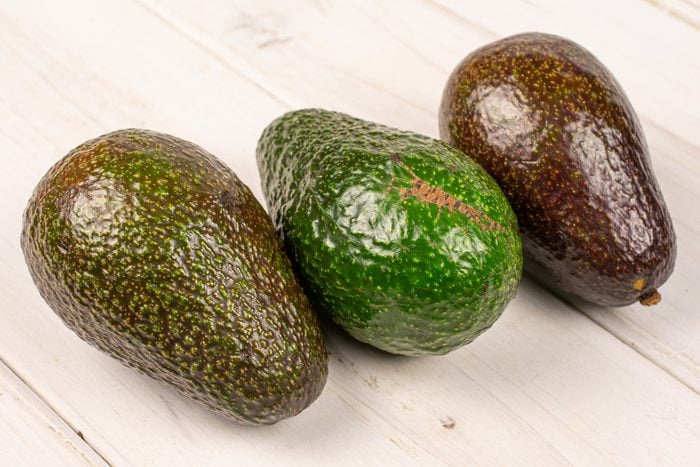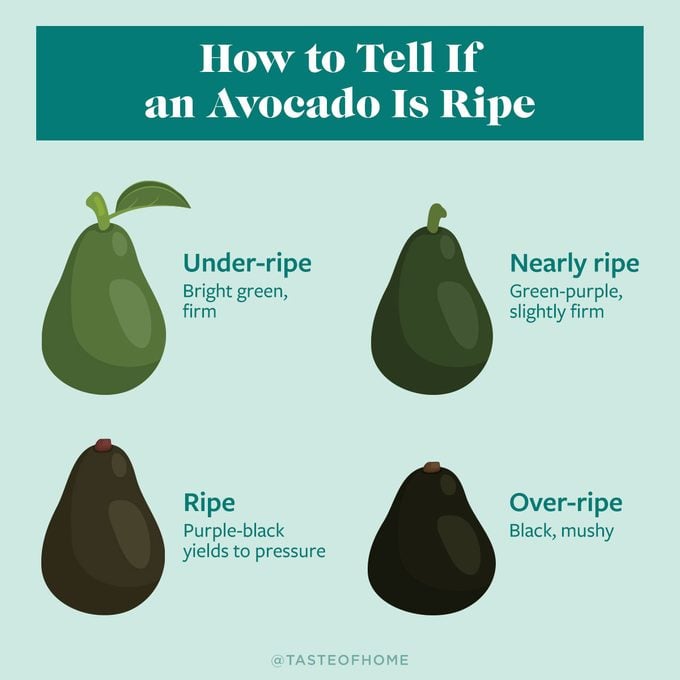How to Tell If an Avocado Is Ripe
Updated: Apr. 05, 2024

Tired of avocados going from green to mush in no time? Say goodbye to food waste and learn how to tell if an avocado is ripe with these easy tips.
I’ve had a lot of practice when it comes to knowing how to tell if an avocado is ripe. Growing up in a household with a Belizean mother and Puerto Rican father, the avocado was the golden fruit of all fruits. Avocados were tucked in every nook and cranny in the kitchen, so it was vitally important to determine how ripe they were. There was no time for mushy avocados in our family!
As a kid, I observed my mother’s discerning process in selecting these beautiful fruits to create all sorts of avocado recipes—from guacamole to salsa de aguacate. It’s a skill I later embraced and honed in my career as a chef.
Knowing how to determine the freshness of the fruit and how to store avocados ensures one can enjoy their optimal flavor and texture, as well as making cost-effective purchasing decisions and minimizing waste.
How to Tell If an Avocado Is Ready to Eat

Understanding the subtleties of an avocado’s ripeness is comparable to mastering an art form: accessible to all with just a little guidance. After all, it’s a skill finding just the right 20-minute window to cut into the fruit. (OK, that’s an exaggeration, but you get the point. They turn to mush so fast.)
Look at the color of the skin
Changes in chlorophyll and oil content create the transition from bright green to purplish black. Darker skin tones indicate the fruit’s maturity and ripeness. The lighter the skin is, the more unripe it’s likely to be. For picture-perfect avocado toast (among other tasty snacks), cut open the avocado when the skin color is between a deep forest green hue and midnight black.
Squeeze the avocado gently
When assessing the ripeness of an avocado, texture is important. Start by gently applying pressure to the top where the stem was attached. Pressing too hard risks bruising the fruit, so keep it to a soft touch. A ripe avocado should give slightly to gentle pressure when squeezed. If it feels mushy or overly soft, it’s likely overripe.
Stem test
The stem test involves removing the small stem at the top of the avocado to check the fruit’s color underneath. Bright green supposedly means it’s ripe. This method isn’t recommended, however, as it can accelerate ripening and cause premature spoilage due to oxidization. Especially refrain from trying this in grocery stores so you don’t ruin the produce for others. This test may also be inaccurate, with both unripe and ripe avocados potentially showing green or brown color under the stem.
How to Tell If an Avocado Is Too Ripe
An overripe avocado will possess a distinct rancid “squash-like” smell and feel mushy to the touch.
When shopping for avocados, it’s helpful to know when you’re going to eat them. If you’re going to consume it on the day purchased, choose a perfectly ripe fruit. If it’s going to be a few days, choose one that’s slightly underripe.
When you’re ready to cut into your fruit, make sure you know exactly how to cut avocados to keep your hands safe and end up with pretty slices, too.
